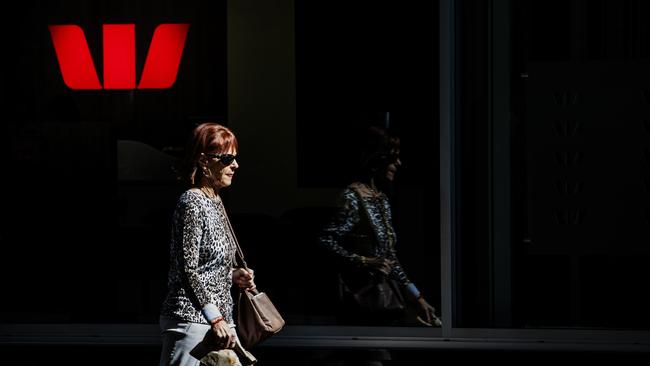Westpac announces out-of-cycle hike in variable rates
Westpac is blaming higher funding costs for an out-of-cycle rise in rates that’s expected to be matched by other big banks.

Westpac, the nation’s second largest lender, has broken with the other Big Four banks by hitting borrowers with the first out-of-cycle rate hike in years, risking the wrath of new Treasurer Josh Frydenberg.
Blaming rising funding costs, Westpac today said it would be hiking interest rates on its standard variable mortgage by 14 basis points to 5.38 per cent for owner-occupiers with principal and interest loans.
For owner occupiers with interest-only loans, rates will increase by the same 14 basis point margin to 5.97 per cent. For investors with principal and interest repayments, rates will rise to 5.93 per cent, while property investors on interest-only loans will be hit with a 6.44 per cent variable rate.
“This is a tough decision,” George Frazis, Westpac’s head of consumer bank, said in a statement.
The changes will come into effect from September 19 and are likely to be followed by the other major lenders Commonwealth Bank, National Australia Bank and ANZ, all of which have been struggling with sharply higher wholesale funding costs.
It comes despite the Reserve Bank having kept the official cash rate at a record low 1.50 per cent since 2016, and a recent signal that official rates would remain low for some time.
Westpac shares surged following the announcement, extending earlier gains to be up 1.7 per cent to $28.60. Shares in other major banks also moved higher, taking the S&P/ASX 200 financials index up 1.5 per cent in afternoon trading.
The move knocked the Australian dollar lower on speculation that other lenders will follow Westpac and that might ultimately force the Reserve Bank of Australia to take an easing stances on interest rates to offset the rate rises in the market. At 5pm (AEST) the Australian dollar was at US73.03 cents, down from US73.45 cents yesterday.
Mr Frydenberg, a former energy minister and financial services minister, said Westpac must now explain to its borrowers why they will face higher costs.
“My view is it’s up to the bank to explain to the Australian people why it lifted rates,” Mr Frydenberg told The Australian. “Any financial institutional which makes these decisions needs to explain to its customers why,” he said.
Shadow treasurer Chris Bowen said Westpac had made a “commercial decision” which they needed to “justify” to their customers.
“Australians are already doing it tough with cost of living pressures, mainly rising power prices and private health insurance cost, and this won’t help,” Mr Bowen said.
Despite a flurry of rate hikes in recent weeks by smaller and regional lenders, the major banks have been reluctant to push greater costs onto borrowers as the banking royal commission continues to unearth scandals about the sector.
However, Westpac said recent increases in wholesale funding costs were not likely to be temporary and told borrowers the rate hikes would not alleviate all the pressure on the bank.
“This is a tough decision but we have a responsibility to price our mortgage products in a way that reflects the reality of our funding costs,” Mr Frazis said.
“Wholesale funding is an important component in our mortgage pricing,” he said. “In particular the bank bill swap rate, which is a key wholesale funding rate for mortgages, increased by about 25 basis points between February and March this year and has remained elevated.
“We initially hoped that this increase would be temporary, and therefore we have incurred these costs over the last six months. The rate changes announced today will not recover these costs.
“We now believe wholesale funding costs will remain high for the foreseeable future,” Mr Frazis said.
Borrowers with an average $300,000 mortgage can expect to pay $35 extra in interest each month. Despite the hike, Mr Frazis stressed rates were still lower than they were three years ago.
Westpac-owned St George has also increased its mortgage rates.
Last week Westpac announced a profit downgrade, attributing almost half of its decline in profitability to rising funding costs, after the bank bill swap rate jumped 24 basis points compared to the period between mid-2017 and mid-2018.
Borrowers holding up to $240 billion in mortgage debt have been hit with higher interest rates, as banks push through rate rises on owner-occupiers and investors.
On top of this, higher funding costs are starting to leak through to the unregulated shadow banking sector, where many more loans worth tens of billions of dollars — often held by riskier “nonconforming” borrowers — are also facing dramatic rate increases.
Non-bank lenders, outside the scope of the Australian Prudential Regulation Authority’s supervision, are forcing through rate rises as so-called warehousing finance costs skyrocket.
Along with Macquarie, other regulated lenders that have increased rates recently include AMP Bank, Bendigo Bank, Bank of Queensland, ING Direct, ME Bank, Suncorp and Citigroup, along with small lenders including Beyond Bank, Auswide Bank, MyState and Qbank.
Borrowers who have bought loans from unregulated lenders such a Yellow Brick Road, Pepper Group, State Custodians, Homeloans and Loans.com, Resi Mortgage Corporation, Vow Financial and others are now facing rising mortgage repayments.
While the Reserve Bank has held the official interest rate steady for 20 months, the last time the central bank cut rates -- in August 2016 following the last federal election -- the banks withheld most of the rate cut from their customers.
The then-Turnbull government responded by establishing the twice-yearly parliamentary griling of the big bank chief executives.





To join the conversation, please log in. Don't have an account? Register
Join the conversation, you are commenting as Logout